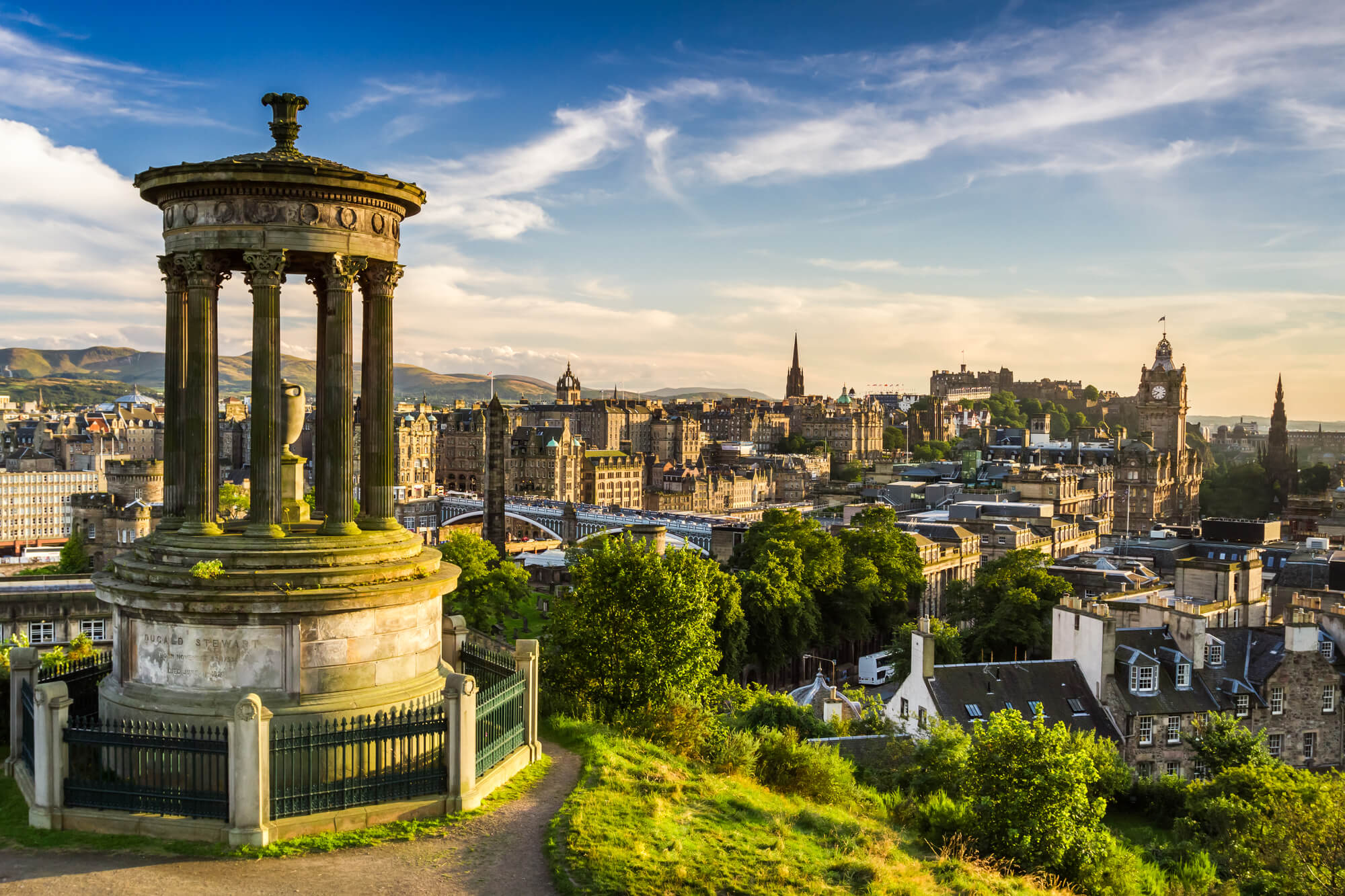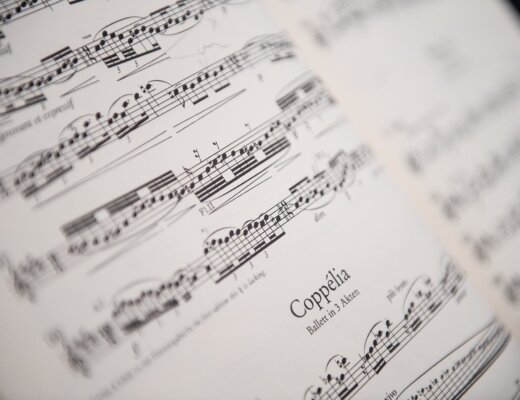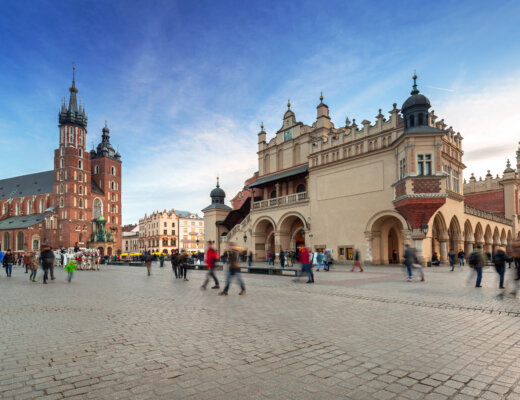Edinburgh, the capital city of Scotland, is a historic and cultural destination that is known for its stunning architecture, rich history, and vibrant cultural scene. The city is built on seven hills, with the medieval Old Town and the Georgian New Town being its main attractions.
The Old Town, which is a UNESCO World Heritage Site, is home to the Edinburgh Castle, which sits atop an extinct volcano and dates back to the 12th century. The castle is one of the most popular tourist attractions in the city and offers a glimpse into Scotland’s past, with exhibits on the country’s history, weaponry, and royal regalia. Visitors can also enjoy stunning views of the city from the castle’s battlements.
Another popular attraction in the Old Town is the Royal Mile, which is a cobbled street that runs from the castle to the Palace of Holyroodhouse. Along the way, visitors can explore the city’s rich history through its many museums, galleries, and shops. The Palace of Holyroodhouse, which is the official residence of the British monarch in Scotland, is also open to the public and offers a glimpse into the life of the royal family.
The New Town, which was built in the 18th century, is a stark contrast to the Old Town, with its wide streets, grand Georgian architecture, and lush gardens. The New Town is also home to many cultural institutions, such as the National Museum of Scotland, the Royal Scottish Academy, and the Scottish National Gallery.
Edinburgh is also known for its festivals, which take place throughout the year. The most famous of these is the Edinburgh Festival Fringe, which is the largest arts festival in the world and takes place in August. The festival features a wide range of performances, including theatre, comedy, music, and dance, and attracts thousands of visitors from all over the world.
In addition to the festivals, Edinburgh is also home to a vibrant cultural scene that includes many theatres, cinemas, and music venues. Visitors can also enjoy the city’s many parks and gardens, such as Princes Street Gardens, which offers stunning views of the city and the castle.
Edinburgh is a city with a rich history and culture, which is reflected in its architecture, museums, and festivals. It’s a perfect destination for those interested in history, culture, and the arts. With its unique blend of medieval and Georgian architecture, lively festivals, and vibrant cultural scene, Edinburgh offers something for everyone.
How to Spend 3 Days in Edinburgh
A good way to spend 3 days in Edinburgh would be to explore the city’s historical and cultural landmarks, such as Edinburgh Castle, the Royal Mile, and the Palace of Holyroodhouse. You can also take a walk along the city’s many scenic routes, such as Arthur’s Seat and Calton Hill. Additionally, you can visit some of the city’s many museums and art galleries, such as the National Museum of Scotland and the Scottish National Gallery. There are also plenty of shops, restaurants, and cafes to enjoy.
We’ll break down these options for you below!
Day 1 – Edinburgh, Royal Mile, and Palace of Holyroodhouse
Edinburgh Castle and Palace of Holyroodhouse essentially book-end the Royal Mile in Edinburgh, making this stretch one of the most popular places to visit in all of Europe. They should all three be a dedicated point of emphasis when you spend time in Edinburgh, and should be absolutely central to your three-day Edinburgh itinerary.
Edinburgh Castle is a historic fortress located in the Scottish capital city of Edinburgh. It sits atop an extinct volcano and has been a prominent feature of the city for over 900 years. The castle has played a significant role in Scotland’s history, serving as a royal residence, military fortress, and prison over the centuries. Walking to the top of the Royal Mile and overlooking the city, Edinburgh Castle provides an incredible view of the city and sits at its true heart.
Exiting the castle, the Royal Mile is a street located in the heart of Edinburgh, running from Edinburgh Castle to the Palace of Holyroodhouse. It is one of the city’s most popular tourist destinations and is home to many historical and cultural attractions, including St Giles’ Cathedral, the Scottish Parliament, and the Museum of Edinburgh. The Royal Mile is also known for its numerous shops, restaurants, and bars, making it a vibrant and bustling area of the city. You can literally spend all day on this street visiting the various buildings, shopping and having great food, and it’s important to spend dedicated time enjoying the energy of the Royal Mile!
The Palace of Holyroodhouse, also known as Holyrood Palace, is the official residence of the British monarch in Scotland. The palace is located at the bottom of the Royal Mile and is closely associated with the history of the Scottish monarchy. The palace has been the residence of Scottish kings and queens for over 500 years and is open to the public for tours, allowing visitors to explore the palace’s rich history and architecture.
Other Historical Buildings and Locations to Visit on Day 1
Edinburgh is known for its historic and iconic landmarks, such as Edinburgh Castle and the Royal Mile. However, there are many lesser-known historical buildings in Edinburgh that are worth exploring. From medieval churches to Georgian townhouses, these buildings are full of fascinating stories and hidden gems. Here are some of the lesser-known historical buildings to see in Edinburgh.
St. Giles’ Cathedral
St. Giles’ Cathedral is often overlooked by visitors to Edinburgh, but it is a fascinating building with a rich history. Founded in the 12th century, the cathedral has been the main place of worship in Edinburgh for over 900 years. It has undergone several renovations and additions over the centuries, resulting in a unique mix of architectural styles. Inside, you’ll find beautiful stained glass windows, intricate stonework, and a fascinating collection of historical artifacts.
The John Knox House
The John Knox House is a hidden gem in the heart of Edinburgh’s Old Town. This 15th-century building is believed to have been the home of the famous Protestant reformer John Knox, who helped bring about the Scottish Reformation. The house has been restored to its original 16th-century state, complete with period furnishings and decor. Visitors can explore the rooms and learn about the life and times of John Knox.
The Georgian House
The Georgian House is a beautifully restored 18th-century townhouse located in the New Town area of Edinburgh. It was built in 1796 as a model of elegance and luxury, and today it offers a fascinating glimpse into the lives of the wealthy elite of Georgian Edinburgh. The house is filled with stunning period furnishings and artwork, and visitors can explore the various rooms and learn about the history of the house and its inhabitants.
The Mary King’s Close
The Mary King’s Close is a series of underground streets and houses that date back to the 16th century. Located beneath the Royal Mile, these hidden streets were once home to the city’s poorest residents. The close has been restored and opened to the public, offering a unique insight into the daily lives of the people who once lived there. Visitors can explore the narrow streets and dark alleyways, and hear the stories of the people who called the close home.
The Dean Village
The Dean Village is a hidden gem located just a short walk from the city center. This picturesque village was once home to the workers of the nearby water mills, and today it offers a peaceful escape from the hustle and bustle of the city. The village is filled with historic buildings and charming cobblestone streets, and visitors can take a leisurely stroll along the Water of Leith and enjoy the tranquil surroundings.
Lauriston Castle
Lauriston Castle is a stunning 16th-century castle located on the outskirts of Edinburgh. The castle was built in 1594 and has been home to many prominent Scottish families over the centuries. Today, the castle is open to the public, offering visitors the chance to explore the various rooms and learn about the history of the castle and its inhabitants. The castle is surrounded by beautiful gardens and grounds, making it a perfect spot for a leisurely stroll.
The Dunbar’s Close Garden
The Dunbar’s Close Garden is a hidden gem located just off the Royal Mile. This tranquil garden was once a burial ground, but it has been transformed into a beautiful and peaceful oasis in the heart of the city. The garden is filled with colorful flowers and plants, and visitors can relax on the benches and enjoy the peaceful surroundings.
In conclusion, Edinburgh is a city full of history and hidden gems. From medieval churches to Georgian townhouses, there are many lesser-known historical buildings to explore.
Day 2 – Walk the scenic routes of Arthur’s Seat and Calton Hill
Edinburgh is known for its stunning architecture, rich culture, and scenic landscapes. One of the best ways to experience Edinburgh’s charm and beauty is through walking tours. With a range of tours available, visitors can explore the city’s history, culture, and natural beauty on foot.
Among the top attractions in Edinburgh are the two hills – Arthur’s Seat and Calton Hill. Walking these hills is a must-do activity for tourists and locals alike.
Arthur’s Seat, situated in Holyrood Park, is the highest point in Edinburgh, standing at 251 meters above sea level. The hill is believed to be an extinct volcano, and it offers a 360-degree panoramic view of the city. Arthur’s Seat is a popular destination for hikers, walkers, and joggers, who are rewarded with breathtaking views of Edinburgh’s skyline and surrounding areas.
The walk up to Arthur’s Seat is not strenuous, but it requires a bit of effort. The journey to the top takes around 30-45 minutes, and it can be a bit challenging for those who are not used to walking uphill. However, the stunning views from the top are worth the effort.
The path to the summit of Arthur’s Seat is well-maintained, and it provides stunning views of the city and the surrounding hills. Along the way, walkers can see the beautiful Holyrood Palace, the Scottish Parliament Building, and the Salisbury Crags. These sights, coupled with the stunning views of the city, make the walk up Arthur’s Seat an unforgettable experience.
Once at the top of Arthur’s Seat, walkers can enjoy breathtaking views of the city, the Firth of Forth, and the Pentland Hills. The summit of the hill is a perfect spot to take in the beautiful Scottish sunset, and to marvel at the beauty of Edinburgh’s cityscape.
Calton Hill, another famous hill in Edinburgh, is located in the city center. It is also known as the “Athens of the North” due to its collection of classical monuments and architecture. The hill is home to several landmarks, including the National Monument, the Nelson Monument, and the City Observatory.
Walking up Calton Hill is a great way to enjoy the beauty of Edinburgh’s cityscape. The walk up to the top takes around 20 minutes, and it is a relatively easy climb. Along the way, walkers can admire the stunning views of the city, the Firth of Forth, and Arthur’s Seat in the distance.
Once at the top of Calton Hill, walkers can enjoy stunning panoramic views of the city and the surrounding area. The National Monument, a monument dedicated to the Scottish soldiers who died fighting in the Napoleonic Wars, is one of the most iconic landmarks on Calton Hill. The monument resembles the Parthenon in Athens, and it adds a touch of classical architecture to the Edinburgh skyline.
The Nelson Monument, a tower dedicated to Admiral Horatio Nelson, is another must-see attraction on Calton Hill. The tower provides a stunning panoramic view of Edinburgh, and it is an ideal spot to take photographs.
The City Observatory, located on the top of Calton Hill, is another attraction worth visiting. The observatory was built in 1818, and it is home to one of the oldest telescopes in the world. The observatory provides a unique perspective on Edinburgh’s skyline and the surrounding area.
Walking Tours in Edinburgh
One of the most popular walking tours in Edinburgh is the Old Town tour. This tour takes visitors on a journey through the city’s historic and medieval past. Starting at Edinburgh Castle, the tour leads visitors down the Royal Mile, past landmarks such as St Giles Cathedral, the Scottish Parliament, and the Palace of Holyroodhouse. Along the way, visitors can admire the stunning architecture of the city’s historic buildings, and learn about the rich history and culture of Edinburgh.
Another popular walking tour is the New Town tour, which focuses on the city’s Georgian architecture and elegant squares. This tour takes visitors through the streets and squares of Edinburgh’s New Town, where they can admire the grand Georgian buildings and learn about the city’s development during the 18th and 19th centuries. The tour includes stops at landmarks such as the Royal Scottish Academy, the National Gallery of Scotland, and Charlotte Square.
For those interested in the supernatural, Edinburgh is said to be one of the most haunted cities in the world. Several walking tours are dedicated to exploring the city’s ghostly past, including the Haunted Underground tour, which takes visitors on a journey beneath the city’s streets to explore its hidden vaults and paranormal hotspots.
Edinburgh also has a rich literary history, and visitors can take a walking tour that explores the city’s literary connections. The tour takes visitors to landmarks such as the Writers’ Museum, where they can learn about the lives and works of famous Scottish writers such as Robert Burns, Sir Walter Scott, and Robert Louis Stevenson.
For nature lovers, a walking tour of Edinburgh’s green spaces is a must. The city is home to several beautiful parks and gardens, including the Royal Botanic Garden, which boasts an impressive collection of plants and flowers from around the world. Visitors can take a leisurely stroll through the gardens, admiring the stunning displays of flowers, and enjoying the peaceful surroundings.
Edinburgh is also home to several scenic walking trails that lead visitors through the city’s natural beauty. One such trail is the Water of Leith Walkway, which follows the path of the river through the city, passing by landmarks such as the Scottish Gallery of Modern Art and the Royal Botanic Garden.
Day 3 – Museums and Art Galleries
Edinburgh is a hub for art and culture enthusiasts, which makes for a great concept for your third day in Edinburgh. The city boasts of a vibrant art and museum scene, showcasing some of the best exhibits from all over the world. From ancient artifacts to contemporary art, Edinburgh has something for everyone. If you’re planning a visit to Edinburgh, here are the best museums and art galleries you should visit.
The National Museum of Scotland
The National Museum of Scotland is one of the most visited attractions in Edinburgh. This museum is a combination of two museums, the Museum of Scotland and the Royal Museum. The Museum of Scotland tells the story of Scotland’s history, culture, and people. The museum has over 20,000 objects on display, including medieval objects, natural history specimens, and contemporary art. The Royal Museum is home to international collections of art, natural sciences, and decorative arts. Visitors can explore the Dolly the sheep exhibit, the Scottish pottery, and the African collections.
The Scottish National Gallery
The Scottish National Gallery is home to Scotland’s national collection of fine art. The gallery has over 2,000 paintings and sculptures from the Renaissance to the 20th century. The collection includes works from world-renowned artists such as Botticelli, Raphael, Van Gogh, and Monet. The gallery also hosts a series of temporary exhibitions that showcase contemporary art and photography.
The Royal Botanic Garden Edinburgh
The Royal Botanic Garden Edinburgh is a must-visit for nature lovers. The garden covers over 70 acres and has one of the world’s largest plant collections. The garden has over 13,500 species of plants from all over the world. Visitors can enjoy a leisurely walk around the gardens, admire the stunning glasshouses, and take part in the various events and exhibitions that take place throughout the year.
The Scottish National Portrait Gallery
The Scottish National Portrait Gallery is a unique museum that tells the story of Scotland’s past and present through portraits. The gallery has over 3,000 portraits that span 500 years of Scottish history. The collection includes works from contemporary artists and photographers, as well as historical portraits of Scottish kings, queens, and heroes. The gallery also hosts a series of temporary exhibitions that showcase Scotland’s contemporary culture and art.
The Writers’ Museum
The Writers’ Museum is a unique museum that celebrates Scotland’s literary heritage. The museum is located in a 17th-century building and tells the story of Scotland’s famous writers, such as Robert Burns, Sir Walter Scott, and Robert Louis Stevenson. The museum has a collection of manuscripts, books, and personal belongings of the writers. Visitors can explore the interactive exhibits and learn about the writers’ life and works.
The Museum of Childhood
The Museum of Childhood is a fascinating museum that showcases childhood toys and games from the past. The museum has over 60,000 objects on display, including dolls, teddy bears, and board games. Visitors can take a trip down memory lane and relive their childhood memories by playing with some of the toys on display.
Overall, Edinburgh is one of the most captivating cities in Europe, and visiting it will easily fill up three days. You could easily spend a week or more in the city, but if you only have a few days, this is the way you should focus your trip while spending three days in Edinburgh!




